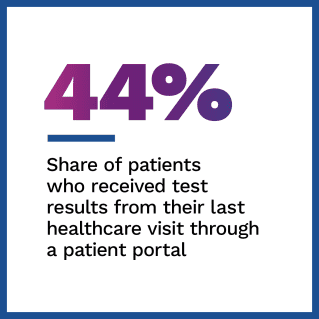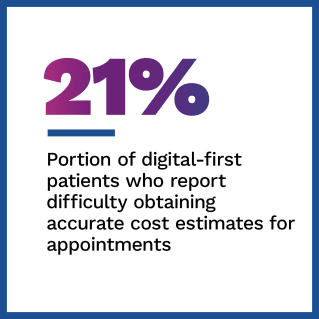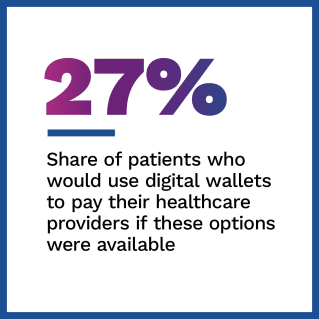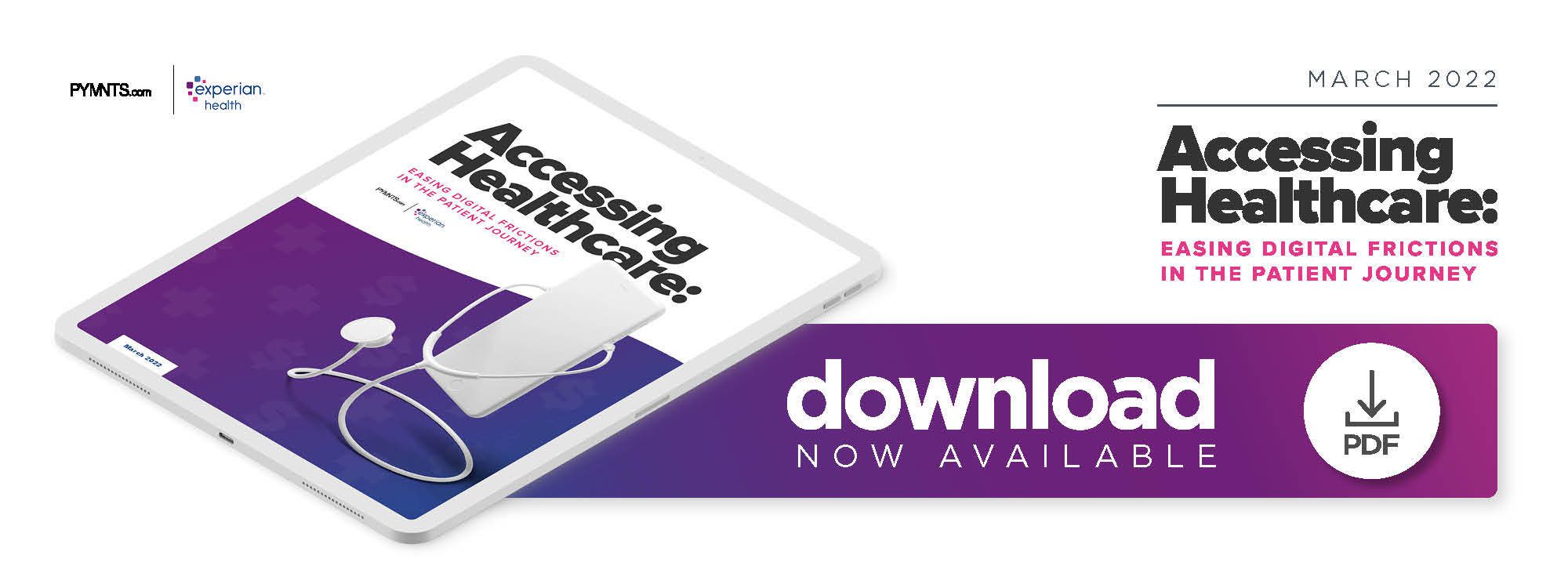NEW DATA: 2,300 Patients Tell PYMNTS Why They’d Switch Drs. for a Better Portal

Consumers’ navigation of the healthcare landscape has radically changed in response to the pandemic. Consumers and providers alike must navigate the accelerated digitization of healthcare services, which promises to provide patients with a wider array of choices in how to access, experience and pay for healthcare.  Empowered by their ability to increasingly interact with healthcare providers via digital channels, digital-savvy consumers expect a seamless experience throughout their patient journey.
Empowered by their ability to increasingly interact with healthcare providers via digital channels, digital-savvy consumers expect a seamless experience throughout their patient journey.
More than a few aspects of the healthcare journey are also going digital: PYMNTS research finds that digital-first consumers prefer to use digital methods for at least five healthcare-related activities. They are also more likely to identify gaps in available services. For example, 21% of digital-first patients find it challenging to receive cost estimates before appointments, compared to just 2% of nondigital patients.
This is just one of the findings uncovered in Accessing Healthcare: Easing Digital Frictions In The Patient Journey, a PYMNTS and Experian Health collaboration. This report examines the increase in consumer use of digital channels such as online portals to engage with healthcare providers. It also provides insights into how consumers access healthcare services via digital methods, what they consider the most significant pain points and how healthcare providers can address these gaps to improve patient care and satisfaction.
 More key findings from the report include:
More key findings from the report include:
• Going to the doctor is becoming a digital experience. Patients show a high preference to perform most healthcare activities using digital methods. Patients increasingly use digital methods for everything from scheduling appointments to receiving test results. Many patients prefer to speak to someone when scheduling upcoming appointments, yet 21% of patients have used digital methods to schedule appointments, with 12% scheduling appointments online via the provider’s patient portal, 6% via the practice’s website and 3% via text or SMS. The most common way patients received results from tests performed during their last healthcare visit was through a patient portal (44%).
 • Two-thirds of patients use patient portals, but many find that the portals lack essential features related to how to pay for the cost of care. Not surprisingly, digital-first patients are more interested in patient portal features than nondigital users. However, there is a gap between the capabilities provided in patient portals and the capabilities these patients consider important. The most significant gap is in receiving cost estimates for appointments. Just 24% of patients receive these estimates, while 64% say such estimates are “very” or “extremely” important, representing a 40 percentage-point gap.
• Two-thirds of patients use patient portals, but many find that the portals lack essential features related to how to pay for the cost of care. Not surprisingly, digital-first patients are more interested in patient portal features than nondigital users. However, there is a gap between the capabilities provided in patient portals and the capabilities these patients consider important. The most significant gap is in receiving cost estimates for appointments. Just 24% of patients receive these estimates, while 64% say such estimates are “very” or “extremely” important, representing a 40 percentage-point gap.
• Patient portals are now table stakes, and 61% of patients interested in using patient portals say they would switch to a healthcare provider that has one. To better engage and retain consumers throughout the patient journey, healthcare providers must find digital solutions to address patients’ needs for critical health-related information and frictionless administrative tasks. Our data also finds that 80% of Generation Z patients and 77% of nondigital patients interested in using patient portals are likely to switch to a healthcare provider that makes one available.
To learn more about how consumers access healthcare services via digital methods, download the report.

